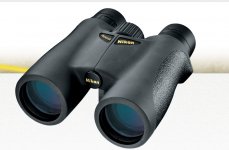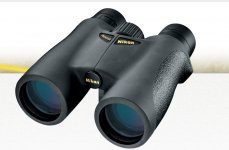Responses seem to confirm either or both: the range of perception of, or importance of, CA to different observers.
I have the 10x32 HG, the earlier version, bought used and in perfect condition. I sought that out due to comments about color rendition I'd read here. I can see CA under the just the right conditions with these, but only if I'm looking for it. In real life, mine anyway, it isn't limiting in any way.
I can see CA with every binocular I've ever owned, to some degree, under some conditions. Including the 8x32 EDG (version 1). I expect more at higher powers, hence not really bothered by that in the 12x50 SE. Seems reasonable to make an allowance, as part of the tradeoff for greater magnification.
I've had a few bins that I sold or stopped using because I noticed CA when I *wasn't* looking for it, and that bothered me. The 10x32 HG doesn't rise anywhere close to that level in my case. But again, much depends on your expectations and viewing uses.
Good luck!
woodfluter,
Today in the Brave New World of ED bins, some ED bins work better than others at controlling CA, but as you mentioned, how much CA any user sees varies with the individual and now much one is bothered by it.
Never tried the 8x32 EDG, but the 8x30 M7 controlled CA better than my 8x30 EII even though it also has a wide FOV. The more edge, the more CA you can see.
So roof beats Porro in this case. Didn't see that very often 5-10 years ago.
The 10x42 SLC-HD was also very good at controlling CA, slightly better than the 8x30 M7 in a side by side test. The old dictum that you have to accept CA as a trade off for higher magnification no longer applies, provided you're prepared to pay the price. If not, then you have to go lower in magnification to get similar results such as the ZR 7x36 ED2, which had no CA in the centerfield even under high contrast situations, or find one of the few ED Porros in existence.
I've owned Porros with ED glass, which worked even better at controlling CA than comparably priced ED roofs. For example, the Celestron 10x50 Voyager ED. Excellent CA control, but with 5* FOV, there wasn't much edge, where CA is usually more noticeable. The 804 Audubon ED and Swift 8x44 ED also handled CA very well. I also tried a Celestron 9.5x44 ED.
But it would be better yet if you were immune to CA altogether or at least not bothered by it, which you don't seem to be if the 12x50 SE doesn't bother while watching circling raptors.
ED glass also has other benefits. It increases contrast by about 15%. It also makes colors more vivid since there is less scattering. So even if you're immune to CA or at least not bothered by it, there can be other benefits to owning a bin with ED glass.
It is perhaps ironic, however, that the reason more and more modern roofs are being made with ED glass is the fact that the internal focusing element adds CA to the view. You could get a comparably clean view from a cheaper Porro, but if you want that same clean view from a roof, you've got to dig deeper into your pocket.
There's no free lunch (except in Austria, they tell me).
Brock






